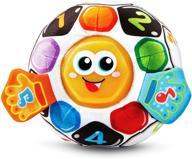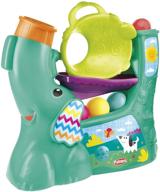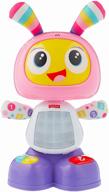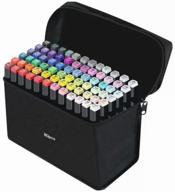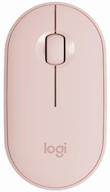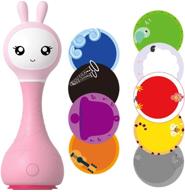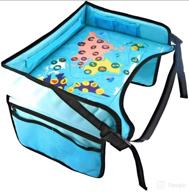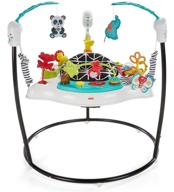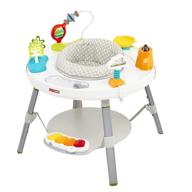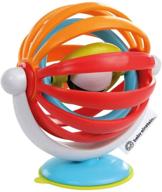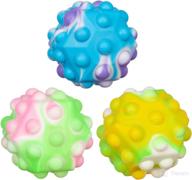The Best Balls for Babies and Toddlers
Balls are a classic toy for babies and toddlers. They help develop hand-eye coordination, gross motor skills, curiosity, and imagination. Choosing the right ball ensures your child gets the most benefits from playtime. Here are the top balls for babies and toddlers by age and stage.
Newborns
At this young age, babies have limited mobility and motor skills. Soft, light, textured balls are ideal for early development. Good options include:
- Rattles - Balls with noisemakers inside appeal to baby's emerging senses
- Crinkle Balls - Textures keep baby engaged and stimulate touch
- Graspable Balls - Easy to hold designs help baby practice grasping
Avoid small balls under 1.25 inches in diameter as these pose a choking hazard.
6 months to 1 year
As babies grow more mobile, larger balls allow them to bat, roll, and toss them. Recommended balls include:
- Lightweight Plastic Balls - Easier for small hands to manipulate and throw
- Textured Rubber Balls - Interesting feel appeals to senses
- Ball Sets - Varying sizes, colors, and shapes engage curiosity
Supervision is still needed for safety at this age.
| Ball Type | Size | Benefits |
|---|---|---|
| Foam balls | 2"-3" diameter | Lightweight, won't hurt if hit by it |
| Plastic balls | 1.5"-2.5" diameter | Easy to see, pick up and throw |
1-3 years
Toddlers gain coordination and confidence to run, kick, and throw balls. Good toddler balls include:
- Playground Balls - Larger and bouncier for gross motor play
- Sport Balls - Soccer, basketball, etc. introduce sports
- Bowling Sets - Balls and pins develop hand-eye coordination
Care should be taken with balls smaller than 1.75 inches in diameter.
Top products in 🏀 Balls
Key Features of the Best Toddler Balls
- Size - Large enough to grasp, not small enough to choke
- Lightweight - Easy for small hands to hold and throw
- Bright colors - Easier for babies to focus on and track
- No toxic materials - Ensure balls are BPA and phthalate-free
- Textured surface - Provides tactile stimulation for little hands
With so many ball toys on the market, focus on quality, safety, and developmental benefits. Start with softer balls, progressing to more complex toys as your baby hits key milestones. Most importantly - have fun playing together!
Types of Balls for Different Ages and Stages
Balls are a timeless toy that helps babies and toddlers develop motor skills, hand-eye coordination, and imagination. Choosing the right type of ball ensures your child gets the maximum benefits from playtime. Here are the best balls to use at different ages and developmental stages.
0-6 months
Newborns have limited mobility and grasp. Soft, light, textured balls stimulate their emerging senses.
- Rattles - Noisemakers inside plastic balls appeal to hearing
- Crinkle balls - Textures keep babies engaged and encourage touch
- Grasping balls - Easy to hold designs help babies practice grasping
Avoid balls under 1.25" diameter due to choking risk.
6-12 months
As babies become more mobile, larger balls allow them to reach, grab, and manipulate the toys.
- Plastic balls - Lightweight and easy to pick up and move around
- Rubber balls - The high-bounce factor appeals to babies
- Ball sets - Varying sizes, colors, and shapes engage curiosity
Always supervise babies with balls. Check size guidelines to avoid choking hazards.
| Type | Size | Benefits |
|---|---|---|
| Foam balls | 2"-3" diameter | Soft, lightweight, safe |
| Plastic balls | 1.5"-2.5" diameter | Easy to grasp and throw |
Similar products
1-3 years
Toddlers gain coordination to throw, kick, bounce, and catch balls. Good options include:
- Playground balls - Large, bouncy for gross motor skills
- Sport balls - Soccer, basketball, footballs, etc.
- Bowling sets - Balls and pins develop hand-eye coordination
Ensure balls are over 1.75" diameter to prevent choking hazards.
Key Features by Age
Newborns:
- Soft, lightweight plastic, cloth or rubber
- Bright contrasting colors
- Textured surfaces
- Rattles or noisemakers
6-12 months:
- Larger solid plastic or rubber
- Varying sizes from 1.5"-2.5" diameter
- Multiple colors and patterns
- Rubber has high bounce
1-3 years:
- Larger, inflatable playground balls
- Sport-specific balls (soccer, basketball, etc.)
- Plastic ball sets with ramps/obstacles
- Bounce and catch balls
Follow size and safety guidelines, and have fun playing with balls together!
Ball Textures and Materials for Babies and Toddlers
The texture and material of a ball impacts how babies and toddlers interact and play with it. The right textures stimulate the senses and support key developmental milestones. Here are some top textures and materials to look for in balls for little ones.
Soft and Silicone Balls
- Made of soft, flexible material like silicone or rubber
- Smooth, non-toxic, and easy to clean
- Good for mouthing as first balls
- Easy to grasp texture helps develop fine motor skills
Plastic Balls
- Made of rigid, durable plastic
- Lightweight for small hands to manipulate
- Vibrant colors capture baby's attention
- Variety of textures from smooth to bumpy
Another interesting products
Foam Balls
- Lightweight foam material
- Soft texture safe for throwing/rolling
- Spongy and squeezable for sensory play
- Varying levels of density and squishiness
Fabric and Yarn Balls
- Made of cotton, wool, or other woven fabrics
- Soft, squeezable, and washable
- Textured surfaces for tactile stimulation
- Make crinkling, rattling sounds to engage babies
| Ball Material | Texture | Sensory Stimulation |
|---|---|---|
| Silicone | Smooth, flexible | Sight, touch |
| Plastic | Rigid, bumpy | Sight, sound, touch |
| Foam | Soft, spongy | Touch, grasp |
| Fabric | Textured, crinkly | Sound, touch, grasp |
Aim for balls with interesting colors, patterns, and varying textures. The more sensory stimulation for little hands, the better! Just ensure all materials are non-toxic, BPA/phthalate-free and meet safety standards.
Ball Sizes for Small Hands
Choosing the right ball size allows babies and toddlers to grasp and manipulate toys with their developing motor skills. Follow size guidelines to select balls they can easily pick up, hold, and play with.
Newborn to 6 Months
- 1.25"-1.5" diameter
- Fits entirely within palm
- Lightweight plastic or rubber
- Textured for grasping
- Avoid smaller than 1.25" - choking risk
6 Months to 1 Year
- 1.5"-2" diameter
- Grasp with whole hand
- Soft, rubber balls for mouthing
- Varying sizes for motor skill development
1 to 2 Years
- 2"-2.5" diameter
- Fit in toddler palm
- Lightweight plastic or rubber
- Squishy foam balls
- Textured or bumpy exterior
2 to 3 Years
- 2.5"-3.5" diameter
- Grasp with fingers
- Rubber sport balls (tennis, soccer, etc.)
- Plastic ball sets
- Introduce child-size sport balls
| Age | Hand Size | Ball Size |
|---|---|---|
| Newborn to 6 months | 2.5"-3" palm | 1.25"-1.5" diameter |
| 6 months to 1 year | 3"-3.5" palm | 1.5"-2" diameter |
| 1 to 2 years | 3.5"-4" palm | 2"-2.5" diameter |
| 2 to 3 years | 4"-4.5" palm | 2.5"-3.5" diameter |
Pay attention to hand size, dexterity, and grip strength when selecting ball sizes. The right fit encourages successful play!
The Benefits of Amazon Prime for Buying Balls
When shopping for balls and ball toys for your baby or toddler, having an Amazon Prime membership provides several key benefits that can save you time, money, and hassle.
Free Two-Day Shipping
Amazon Prime offers free two-day shipping on over 100 million products, including all types of balls. This means you can quickly get ball toys delivered right to your door without paying extra shipping fees. No more waiting over a week for standard shipping!
Free One-Day and Same-Day Delivery
For those times when you need a gift or just ran out of toddler activities fast, Prime provides free one-day shipping on over 3 million items. Select areas can even get same-day delivery on a wide selection of balls and toys when you order in the morning.
Free Release-Date Delivery
Don't miss out on hot new toy releases! With Prime's free release-date delivery option, you can pre-order upcoming balls and ball toys and have them delivered on their official release date at no extra charge.
Try Before You Buy
Not sure which type of ball will be the right size, texture, or bounce for your baby? With Prime, you can order balls and toys eligible for the Try Before You Buy program. This allows you to try them out with your little one for free before being charged.
Instant Video Access
Stuck inside on a rainy day? Prime provides unlimited, instant access to thousands of popular ball-related videos. Learn new baby play routines and toddler ball games to keep them engaged indoors.
Prime-Exclusive Deals
Amazon Prime members get exclusive access to special deals and discounts on select balls and toys throughout the year. This makes it more affordable to try new developmental balls as your child hits new milestones.
So don't waste time running all over town to hunt for the perfect ball. With a Prime membership, you can conveniently order a wide selection of balls and ball toys delivered fast right to your home!
A Working Outline Should Include Your Bibliography.
A working outline is a tool used to organize information that will be included in an essay or research paper. It often begins with the thesis statement and is followed by the major points that will be made in the paper along with supporting information to bolster the position. A working bibliography is a tool that can aid in keeping an ongoing and detailed list of sources for a specific project. It has two main purposes: to keep a record of the sources a writer has already examined or plans to examine, and to record the publishing details of each source a writer utilizes or cites so that the sources can be properly referenced in a Works Cited or References List at the end of the document. When setting up a report with an outline and bibliography, the outline should describe the topic, purpose, intended audience, and thesis statement of the report. The bibliography should start on a separate page from the outline and should include all the sources used in the report. A preliminary bibliography is an outline of all the sources that might be used to compose arguments in a research paper. An outline is a systematic way of organizing ideas for a paper, and it can be an informal or formal outline. The organizing principle of an outline will depend on the topic, the argument to be made, and the expectations of the audience.
Working Bibliography Example
Here is an example of a working bibliography for a research paper on the topic of climate change:
- Intergovernmental Panel on Climate Change. "Climate Change 2021: The Physical Science Basis." Cambridge University Press, 2021.
- National Oceanic and Atmospheric Administration. "Global Climate Change Indicators." NOAA, 2021.
- United Nations Framework Convention on Climate Change. "Paris Agreement." UNFCCC, 2015.
- Cook, John, et al. "Consensus on consensus: a synthesis of consensus estimates on human-caused global warming." Environmental Research Letters, vol. 11, no. 4, 2016.
- Mann, Michael E., et al. "Global-scale temperature patterns and climate forcing over the past six centuries." Nature, vol. 392, no. 6678, 1998.
- Oreskes, Naomi. "The Scientific Consensus on Climate Change." Science, vol. 306, no. 5702, 2004.






